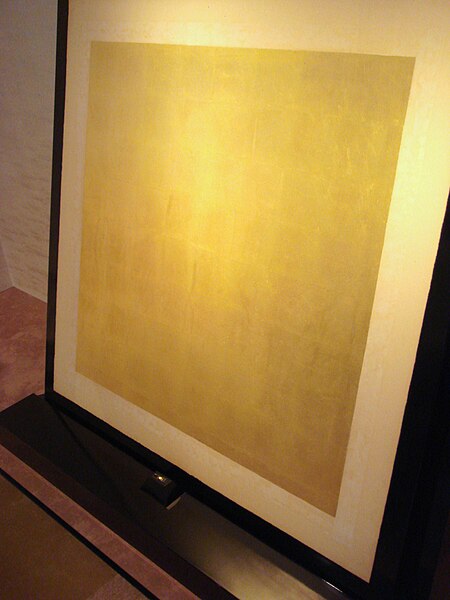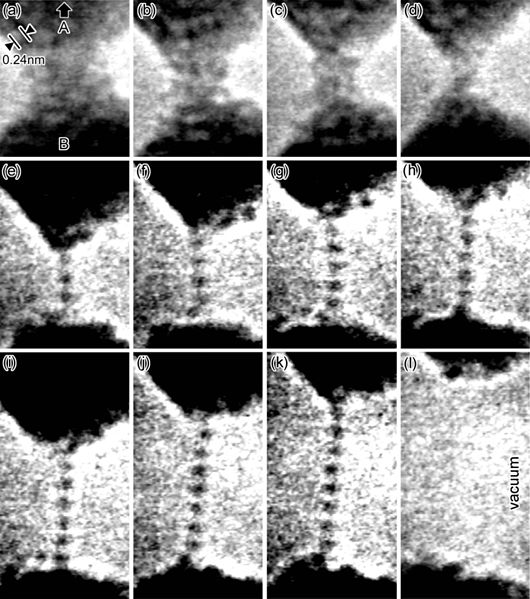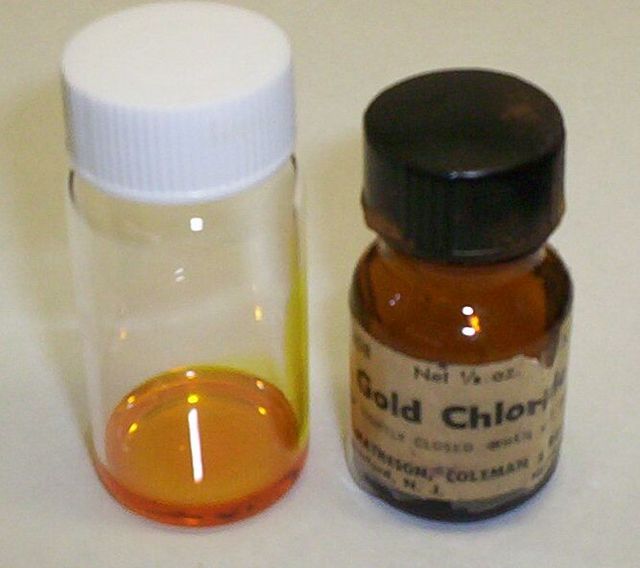Gold leaf is gold that has been hammered into thin sheets by a process known as goldbeating, for use in gilding.
A gold nugget of 5 mm (0.2 in) in diameter (bottom) can be expanded through hammering into a gold foil of about 0.5 m2 (5.4 sq ft). Toi gold mine museum, Japan.
Mycenaean necklace; 1400–1050 BC; gilded terracotta; diameter of the rosettes: 2.7 cm, with variations of circa 0.1 cm, length of the pendant 3.7 cm; Metropolitan Museum of Art (New York City)
An engraving showing the goldbeating process, 1698
22k gold leaf applied with an ox hair brush during the process of gilding
Gold is a chemical element with the symbol Au and the atomic number 79. In its pure form, it is a bright, slightly orange-yellow, dense, soft, malleable, and ductile metal. Chemically, gold is a transition metal, a group 11 element, and one of the noble metals. It is one of the least reactive chemical elements, being the second-lowest in the reactivity series. It is solid under standard conditions.
Gold
Gold can be drawn into a monatomic wire, and then stretched more before it breaks.
A gold nugget of 5 mm (0.20 in) in size can be hammered into a gold foil of about 0.5 m2 (5.4 sq ft) in area.
Gold(III) chloride solution in water







